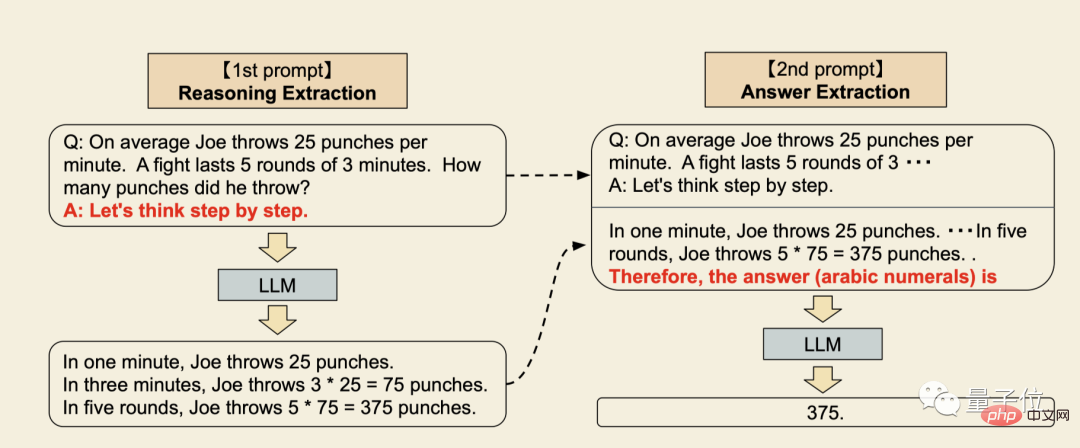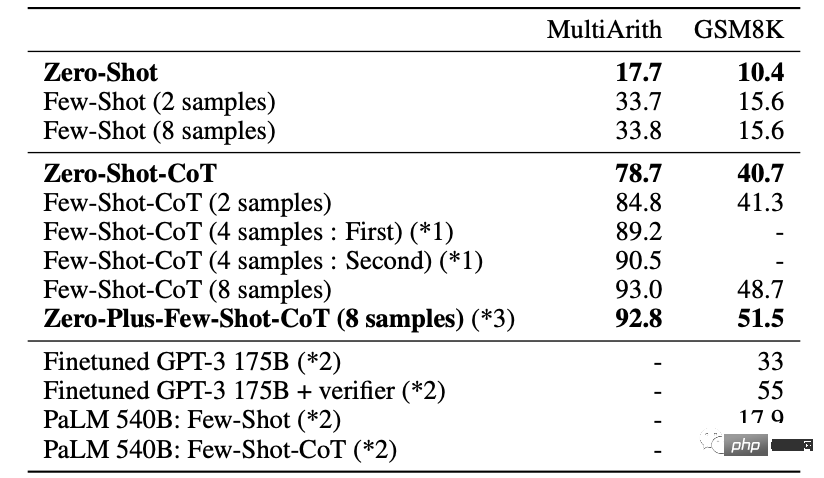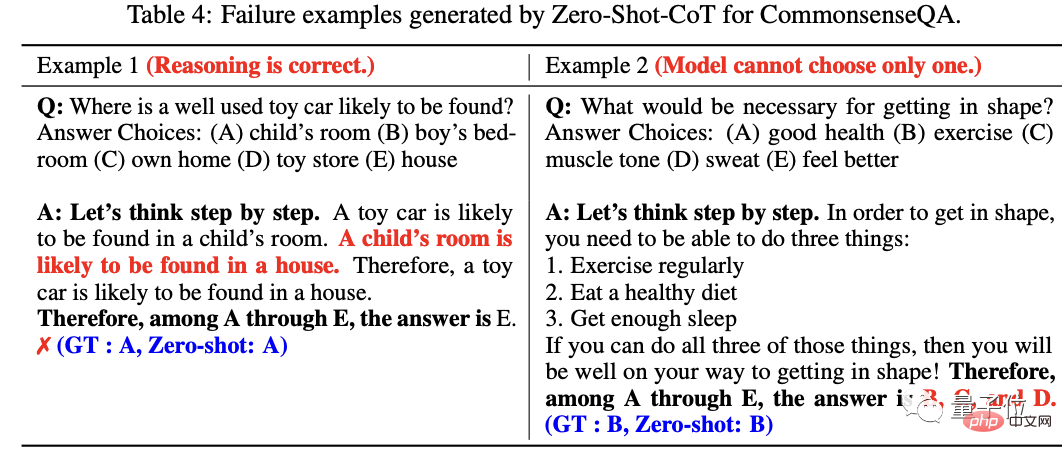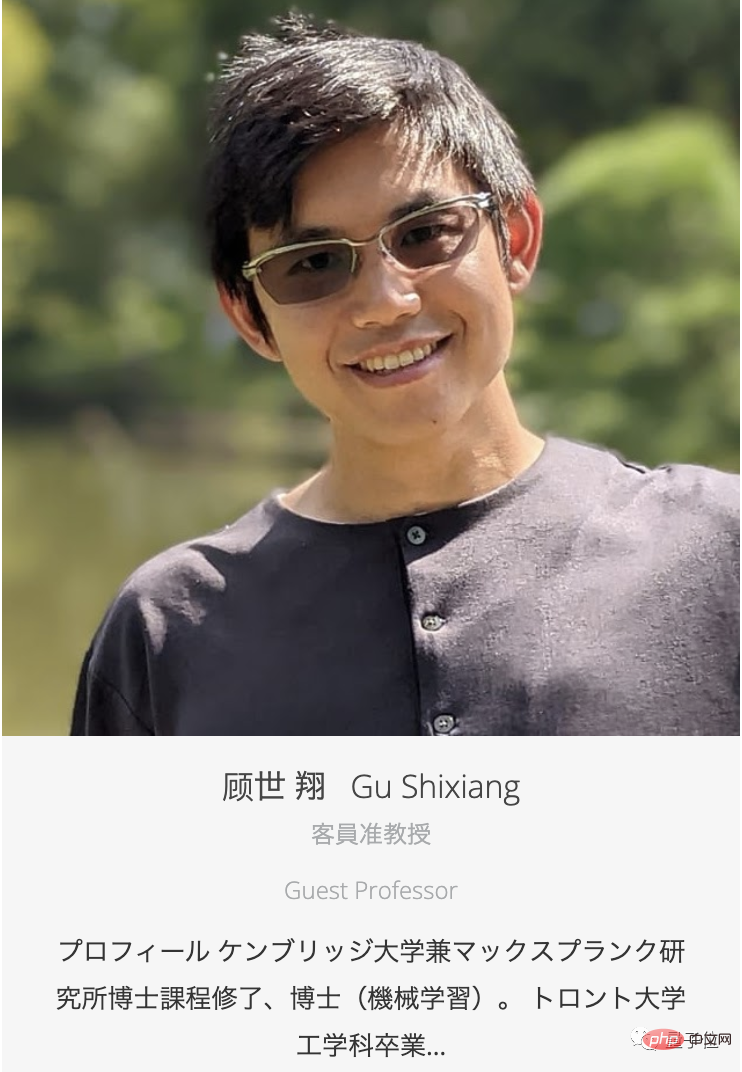
When I woke up, the machine learning community was in a state of shock.
Because the latest research has found that just saying "Let's think step by step" to GPT-3 will allow it to correctly answer questions that it could not answer before.
For example, the following example:
Half of the 16 balls are golf balls, and half of these golf balls are blue. How many blue golf balls are there in total?

(The problem is not difficult, but please note that this is zero-sample learning, which means that similar problems have never been seen during the AI training stage.)
If GPT is required -3 Directly write "what is the answer", it will give the wrong answer: 8.
But after adding the "spell" that lets us think about it step by step, GPT-3 will first output the steps of thinking, and finally give the correct answer: 4!
And this does not It's not a coincidence, the research team fully verified it in the paper.
The above question comes from the classic MutiArith data set, which specifically tests the language model's ability to solve mathematical problems. GPT-3 originally had an accuracy of only 17% in a zero-sample scenario.
This paper summarizes the 9 most effective prompt words. Among them, the first 6 words that were changed to let GPT-3 think gradually increased the accuracy rate to more than 70%.

Even the simplest “Let’s think” (let’s think about it) can rise to 57.5%.
It feels like a kindergarten aunt is coaxing a child...
This technique does not seem to require any magic modifications to GPT-3. Someone has successfully reproduced it on the OpenAI official demo. Even changing it to Chinese will work.
English questions have Chinese hints, and GPT-3 gives the correct Chinese answers.

The Google researcher who first forwarded this paper to the social network said that the new all you need has been added.

Seeing this, the big guys from all walks of life started to have their imaginations wild and started making jokes.
What would happen if you encouraged the AI to say "You can do it, I believe in you"?

Threaten the AI by saying "Time is running out" or "You What about "having a gun on your head"?

Will saying "drive more carefully" to the AI become a self-driving solution?

Some people also pointed out that this is almost the same as the plot of the science fiction story "The Hitchhiker's Guide to the Galaxy". The key to achieving general artificial intelligence is knowing how to ask the AI correctly.

So, what is going on with this magical phenomenon?
It is a collaborative research between Google Brain and the University of Tokyo, which explores the performance of large language models in zero-sample scenarios.
The title of the paper "Language Model is a Zero-Sample Reasoner" also pays tribute to GPT-3's "Language Model is a Few-Sample Learner".

The method used belongs to Chain of Thought Prompting (CoT), which was just proposed by the Google Brain team in January this year.

The earliest CoT was applied to few-sample learning. While asking questions, a step-by-step answer example was given to guide the AI.

This latest research proposes zero-sample CoT. The main change is to simplify the example part.

#The biggest advantage of this is that it is universal, and there is no need to provide dedicated examples for different problem types.
The paper has done sufficient experiments on various problems, including 12 tests:
Compared with ordinary zero-shot learning, zero-shot CoT achieves better results in 10 of them.

The value on the right side of △ is the additional experimental result
In the more difficult MultiArith and GSM8K math tests, the latest version of GPT-3 Text-davinci was used -002 (175B) conducted more in-depth experiments.
If you give 8 attempts to get the best result, the accuracy can be further improved to 93%.

In the analysis of error results, researchers also found that in many questions, the reasoning process of AI is actually correct, but when the answer cannot converge to a unique determination, multiple answers will be given. Alternative.

At the end of the paper, the research team proposed that this study can not only serve as the baseline for zero-sample CoT, but also hopes to make the academic community realize the importance of constructing fine-tuned data sets and few-sample prompt templates. Previously, we fully explored the importance of zero-sample capabilities of large language models.
The research team comes from the Matsuo Laboratory of the University of Tokyo.

The person in charge, Professor Matsuo Yutaka, is also the first artificial intelligence expert on SoftBank’s board of directors.

Visiting professor Gu Shixiang among the team members is from the Google Brain team. Gu Shixiang studied under Hinton, one of the three giants, for his undergraduate degree and graduated with a doctorate from the University of Cambridge.
Why zero-sample CoT works remains to be explored.
However, someone experimentally concluded that this method seems to be only effective for GPT-3 (text-davinci-002). He tried version 001 and found little effect.

He listed an example of what he did.
Question: Please connect the last letters of each word in machine and learning.
The answer given by GPT-3 when prompted is to connect all the letters in the two words.

In response, one of the authors, Gu Shixiang, replied that in fact, the "spell" has an effect on both the initial version and the improved version of GPT-3, and these results are also reflected in the paper. .

Some people have also questioned whether deep learning has become a game of finding a "magic spell"?

At the same time, we saw Marcus again in the Tucao team.
He also listed an example of failure. GPT-3, with the blessing of the "spell", failed to figure out whether Sally's cow would come back to life...

However, it is worth noting that it is not uncommon for examples like this to add a little magic to the AI, and the improvement effect is immediate.
Some netizens shared that adding a few intermediate commands when using GPT-3 can indeed get more satisfactory results.

Previously, researchers from Google and MIT found that without changing the underlying architecture, as long as the training language model will "break points" like programmers when debugging, the model reads the code, My ability to do arithmetic improved quickly.

The principle is also very simple, that is, in a program with many calculation steps, let the model encode each step into text and record them in a file called "Sticky Notes" ” in the temporary register.
As a result, the calculation process of the model becomes clearer and more orderly, and the performance is naturally greatly improved.
There is also Instruct GPT-3 used for testing in this experiment, which is also a typical example.
Just by letting GPT-3 learn intensively from human feedback, it can significantly improve the situation of answering incorrect questions.
Specifically, we first use some human demonstration answers to fine-tune the model, then collect several sets of different output data for a certain question, manually sort the several sets of answers, and train the reward model on this data set.
Finally, using RM as the reward function, the Proximal Policy Optimization (PPO) algorithm fine-tunes the GPT-3 policy to maximize rewards with reinforcement learning methods.

Including Aran, the Twitter blogger who ignited this topic, was the one who originally discovered that adding "Unreal Engine" can make the quality of AI-generated images soar.

Former Google robot boss Eric Jang also previously discovered that reinforcement learning can also use similar thinking to improve computing efficiency.

Some people also said that this kind of technique used in AI is not what they usually use when using their brains?

In fact, Bengio has previously started from brain science and proposed that the operating mode of AI should be like the human brain mode.
Human cognitive tasks can be divided into system 1 cognition and system 2 cognition.
System 1 cognitive tasks refer to those tasks that are completed unconsciously. For example, you can immediately identify what you are holding in your hand, but you cannot explain to others how you completed this process.
System 2 cognitive tasks refer to cognitions that the human brain needs to complete according to certain steps. For example, if you do an addition and subtraction calculation, you can clearly explain how you arrived at the final answer.
The "spell" added this time is to allow AI to go one step further and learn to think in steps.
Faced with this trend, some scholars believe that "hint engineering is replacing feature engineering."

So "cue word hunter" will become the nickname of the next generation of NLP researchers?

Paper address ://m.sbmmt.com/link/cc9109aa1f048c36d154d902612982e2
Reference link:
[1]https: //twitter.com/arankomatsuzaki/status/1529278580189908993
[2]https://evjang.com/2021/10/23/generalization.html
The above is the detailed content of A little coaxing can increase GPT-3 accuracy by 61%! Google and University of Tokyo research is shocking. For more information, please follow other related articles on the PHP Chinese website!
 Introduction to the usage of vbs whole code
Introduction to the usage of vbs whole code
 How to switch between full-width and half-width
How to switch between full-width and half-width
 How to display two divs side by side
How to display two divs side by side
 Three commonly used encoding methods
Three commonly used encoding methods
 A complete list of idea shortcut keys
A complete list of idea shortcut keys
 c/s architecture and b/s architecture
c/s architecture and b/s architecture
 What is the difference between mysql and mssql
What is the difference between mysql and mssql
 What are the main functions of redis?
What are the main functions of redis?




